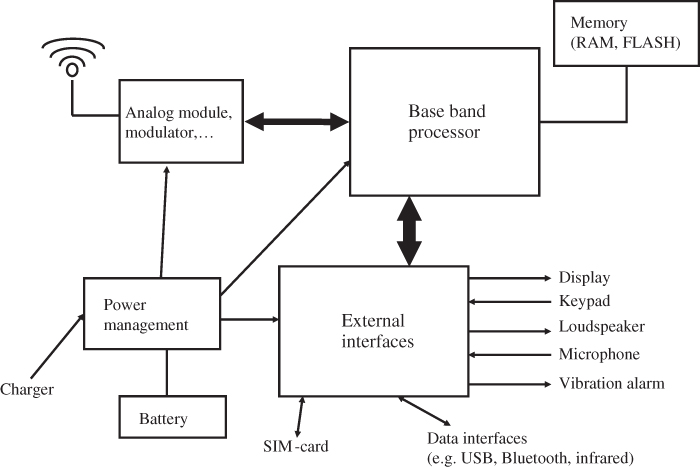1.9 The Mobile Device
Owing to the progress of miniaturization of electronic components during the mid-1980s, it was possible to integrate all components of a mobile device into a single portable device. A few years later, mobile devices have shrunk to such a small size that the limiting factor in future miniaturization is no longer the size of the electronic components. Instead, the space required for user interface components like display and keypad limit a further reduction. Owing to the continuous improvement and miniaturization of electronic components, it is possible to integrate more and more functionalities into a mobile device and to improve the ease of use. While mobile devices were at first used only for voice calls, the trend today is toward devices known as ‘integrated mobile phones’ for different user groups, such as
- smartphones for voice and data communication;
- mobile devices specialized in camera replacement; and
- touchscreen devices with application frameworks and sophisticated mobile web-browsing capabilities.
Irrespective of the size and variety of different functionalities, the basic architecture of all mobile devices is very similar and is shown in Figure 1.46.
Figure 1.46 Basic architecture of a mobile phone.

The core of the mobile device is the base band processor which contains an RISC (reduced instruction set) CPU and a digital signal processor (DSP). ...
Get From GSM to LTE: An Introduction to Mobile Networks and Mobile Broadband now with the O’Reilly learning platform.
O’Reilly members experience books, live events, courses curated by job role, and more from O’Reilly and nearly 200 top publishers.

